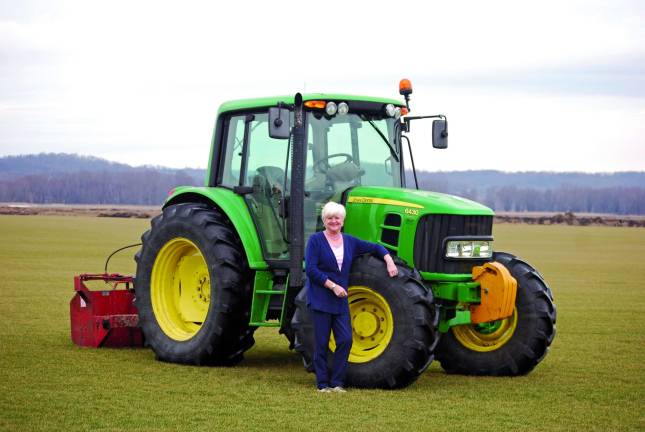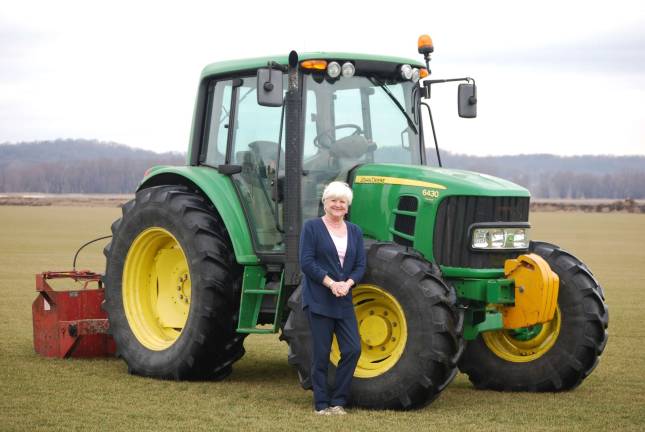The black dirt is legendary – remember?


There is no shortage of obstacles facing black dirt farmers. Take thrips, the tiny slender winged insects that feed on young onions. Or the scarcity of migrant farm labor, which has gotten so bad that 30 percent of local produce rots in the fields because there aren’t enough hands to pick it. A Wallkill River whose devastating floods are getting more frequent, ever threatening to return the Drowned Lands to their original state. A widespread suspicion that farmers everywhere abuse their workers – a prejudice that’s not only unsubstantiated but also illogical: if farmworkers aren’t happy these days they can simply walk off the job to any number of other shorthanded farms, leaving the original farmer in the lurch.
But underlying all these difficulties is the fact that most of us probably haven’t thought much about them. Black dirt farmers labor in an obscurity that’s confounding, given the productivity of this foodshed so near the city and a locavore movement that adores farmers – or at least the ones that know how to market themselves.
“When we would go back to the city, we’d meet people and they’d say, where do you live?” Cheetah Haysom explained, sitting at the kitchen table of her house on a hill, which offers 360-degree views of the black dirt fields below. “We’d tell them, you know where the black dirt is? And everyone would say no.
“It became clear to me that once upon a time, it was very well known, but now people have got no clue,” she said. “So you know, this was an anomaly. How come they don’t know? This was a place crying to be known about, specially at a time when it’s in trouble, threatened.”
After Superstorm Sandy brought floods that destroyed an entire season’s crops in 2011, “something needs to be done,” Haysom thought. “Specially since they can’t really get the money or the will to fix what’s wrong. They’ve got a plan to fix the Wallkill, to stop flooding as much as you can” — a plan, described in the book, that calls for digging shallow “benches” 90 feet out from the riverbank that would hold at least some overflow. But first people needed to understand what was at risk.
Thus was born her book, Pride and Produce: The Origin, Evolution, and Survival of the Drowned Lands, the Hudson Valley’s Legendary Black Dirt Farming Region.
Upon hearing her lilting accent, you might think Haysom an unusual candidate for farm country historian. She hails from South Africa, where she grew up and worked as a reporter. When the apartheid government finally allowed TV, Haysom’s employer posted her in New York to cover television and Broadway. It was a beat that couldn’t be more unlike the one she finds herself covering now, which involves driving long bumpy roads to talk to farmers, to walk the riverbank and examine ditches (“these ditches,” she said, “are sacrosanct”).
Though she may never be considered a local by sixth-generation farmers, Haysom has been here a long time. She was originally drawn from the city to Warwick by the rural beauty that reminded her of where she’d grown up. She raised her kids in the spectacular house she and her husband, Donald DaParma, a lawyer, built on 40 acres in Pine Island. Verandas on all sides soak in the views of the farm fields and the winding Wallkill.
She served as president of the Pine Island Chamber of Commerce from 2007 to 2009, and as a volunteer writer of business profiles for the chamber’s newsletter for much longer. Researching and writing the book took about three years, but much of the material had already been gleaned over decades. It’s the kind that can only come about through intimacy. Farmers are not prone to pouring their hearts out to outsiders.
They’ve got good reason to be reticent; according to Haysom, often, on the heels of publicity comes a flurry of inspections.
“Initially I was anxious: would people talk to me?” she recalled.
True to stereotype, the first onion farming family that Haysom approached – the established and entrepreneurial Osczepinskis, of S & S O Produce Farms in Goshen – didn’t want to talk. But after that the stories started flowing.
These farmers “were feeding a market that didn’t know anything about them,” said Haysom, explaining their eagerness to participate. Farmers today, she said, are “much more attuned to what’s going on politically, and I think many of them realized that if we’re going to get any help, from any government — federal or local — people have to know what we’re doing and what we’re up against.”
She spoke to old timers about life in the early days, when celery and onions were bringing in such good money that “there was a saying,” recalled John Ruskiewicz, farmer and president of the Drowned Lands Historical Society, “that if you dropped a quarter in the Black Dirt in those days, by the time you picked it up it would be a dollar.” She learned of feuds going back generations between Polish and German immigrant families that settled the black dirt, and saw how some have thawed. She spoke to a master lettuce-picker who since 1979 has made the increasingly dangerous pilgrimage between his home in Mexico to Florida to Pine Island and back again, now with his 20-year-old son. She heard about the bonds that can border on familial between farmers and their longtime crews.
After flying through the first 500 copies of the self-published book, Haysom has just ordered another 500. To see where the book is available: warwickinfo.net/pride-and-produce.
Haysom’s house on the hill is now for sale: it’s too big for two, she said, and she and her husband see themselves growing old in the city. In a way, then, her book might be seen as a parting gift to the region from one who gave many.